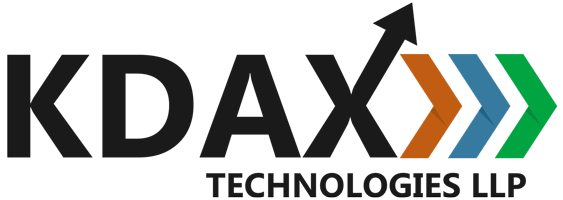Artificial Intelligence (AI) is often portrayed as a silver bullet that can instantly revolutionize businesses, drive exponential growth, and replace entire workforces. But how much of this is reality, and how much is just hype? While AI undeniably offers transformative potential, its true impact depends on how businesses implement and integrate it into their operations.
In this blog, we’ll explore the real-world impact of AI on business growth, debunk common myths, and highlight practical applications that drive measurable success.
The AI Hype: What People Expect vs. Reality
Expectation 1: AI Will Fully Automate Businesses
Many assume that AI can take over entire business functions, eliminating the need for human intervention.
✅ Reality:AI enhances business processes, but human expertise remains essential. AI-driven automation streamlines repetitive tasks like data entry, customer support, and financial reporting. However, strategic decision-making, creativity, and emotional intelligence still require human input.
Expectation 2: AI Delivers Immediate Results
Companies often expect AI to provide instant solutions and immediate ROI.
✅ Reality: AI requires a structured approach. It depends on high-quality data, proper implementation, and continuous learning. Businesses that integrate AI successfully invest in training their teams and refining their AI models over time.
Expectation 3: AI is Only for Large Corporations
A common misconception is that only tech giants like Google, Amazon, or Tesla can leverage AI effectively.
✅ Reality: AI is accessible to businesses of all sizes. Cloud-based AI tools, automation platforms, and machine learning applications are available for small and mid-sized enterprises (SMEs) to improve efficiency and decision-making.
Where AI is Delivering Real Business Growth
- AI-Powered Sales and Marketing Growth
AI is transforming sales and marketing strategies by enabling hyper-personalization and predictive analytics.
🔹 Lead Scoring & Conversion Optimization – AI-driven CRM systems analyze customer behavior and prioritize high-value leads, improving conversion rates.
🔹 Personalized Marketing Campaigns – AI analyzes customer data to tailor content, email campaigns, and product recommendations for maximum engagement.
🔹 Dynamic Pricing Strategies – AI-powered pricing models adjust prices in real-time based on demand, competitor pricing, and customer behavior.
✅ Real-World Example: E-commerce platforms like Amazon and Shopify use AI to recommend products, optimize pricing, and drive customer engagement, leading to increased revenue.
- AI in Customer Experience & Service
AI-driven chatbots, voice assistants, and predictive analytics are redefining customer interactions.
🔹 AI Chatbots for Instant Support – Businesses use AI-powered chatbots to provide 24/7 customer support, resolving queries in real-time.
🔹 Sentiment Analysis – AI monitors social media and customer feedback to gauge brand perception and improve customer satisfaction.
🔹 Voice & Image Recognition – AI enables voice searches, facial recognition, and automated customer verification for smoother experiences.
✅ Real-World Example: Companies like Apple and Google use AI-powered virtual assistants (Siri, Google Assistant) to enhance user interactions, while banks use AI for fraud detection and personalized financial advice.
- AI in Operations & Supply Chain Efficiency
AI is streamlining business operations by optimizing logistics, inventory, and workforce management.
🔹 Predictive Maintenance – AI anticipates equipment failures before they happen, reducing downtime and maintenance costs.
🔹 Supply Chain Optimization – AI analyzes market demand, supplier data, and delivery routes to improve logistics efficiency.
🔹 Process Automation – AI-driven RPA (Robotic Process Automation) automates invoice processing, procurement, and HR operations.
✅ Real-World Example: Companies like Walmart and FedEx use AI-driven supply chain analytics to optimize inventory management and reduce delivery times.
- AI-Driven Financial Growth & Risk Mitigation
AI is helping businesses make data-driven financial decisions and mitigate risks.
🔹 Fraud Detection & Prevention – AI algorithms detect unusual transaction patterns and prevent fraudulent activities.
🔹 Automated Financial Planning – AI forecasts cash flow, predicts expenses, and optimizes financial planning.
🔹 AI-Powered Credit Scoring – AI evaluates credit risks, helping banks and lenders make better loan decisions.
✅ Real-World Example: Financial institutions like JPMorgan Chase and PayPal use AI to detect fraud, assess credit risks, and personalize banking services.
How Businesses Can Avoid the AI Hype Trap
To ensure AI investments translate into real business growth, companies must focus on:
✔ Clear Business Goals – AI should solve specific problems, not just be implemented for the sake of it.
✔ High-Quality Data – AI models depend on clean, structured, and diverse datasets.
✔ Human-AI Collaboration – AI works best when combined with human expertise, not as a replacement.
✔ Continuous Optimization – AI models require constant refinement and updates.
✔ Scalable AI Solutions – Start small, measure impact, and scale AI solutions gradually.
Final Thoughts: The Future of AI in Business Growth
AI is no longer just a buzzword—it’s a critical tool for businesses looking to scale, optimize efficiency, and improve decision-making. However, the key to unlocking AI’s true potential lies in separating hype from reality. Businesses that strategically integrate AI into sales, customer experience, operations, and finance will see long-term, sustainable growth.
The question isn’t whether AI can drive business growth—it’s whether businesses are ready to harness AI effectively. 🚀
Is your business AI-ready? Let’s explore how AI can drive real growth for your company!
